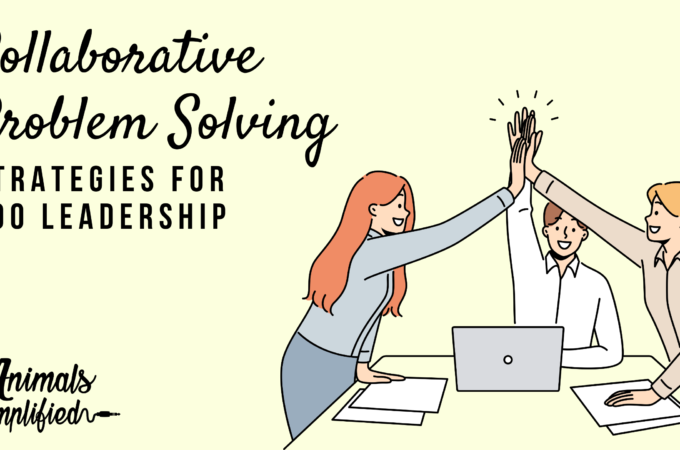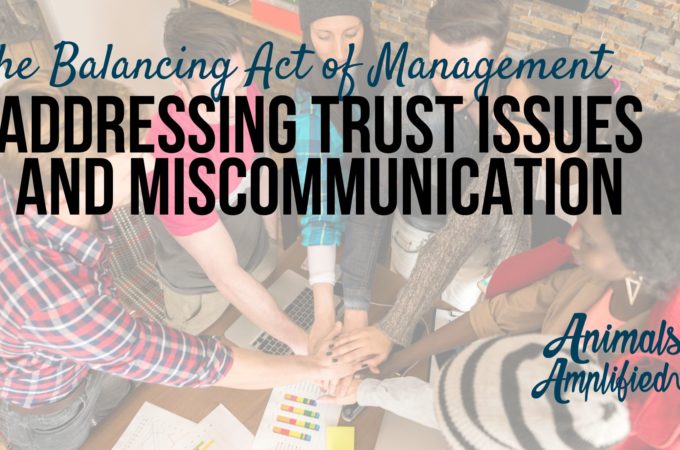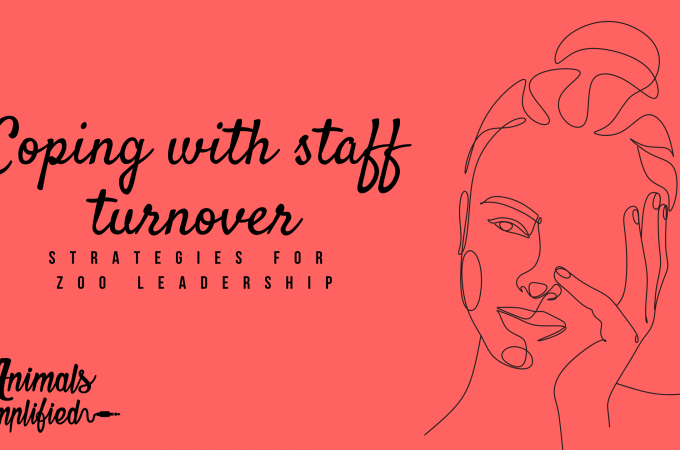
To Be Clear Is To Be Kind: Radical Candor Review
To be clear is to be kind. After hearing this book’s recommendations, I finally cracked the spine. The first paragraph hit me in the feels. Kim Scott, the author, wrapped up what I’ve seen immediately.
“ What I have learned not only from my own experiences but also from coaching leaders is that, no matter how supportive the environment, bosses often feel alone. They feel ashamed that they’re not doing a good job, sure that everyone is doing better, and thus unable or afraid to seek help.”
I’ve heard it repeatedly from the leaders I coach and mentor. Or when a curator or lead keeper walks me from one training session to another during a consulting visit. I feel their desperation to share their struggles and feel less alone. The irony is that all of us leaders are in the same boat. I venture to say the good and the bad all lose sleep about whether they’re doing a good job or not and feel lonely.
So let’s learn together!
Part 1 of the book starts with the philosophy of Radical Candor.
The Why
Scott launches into a story about how as an early manager, she complained to her CEO about how she was tired of being an emotional babysitter to her entire team. Her boss said, “This is not babysitting. It’s called management, and it is your job!”
“I’m tired of all this hand-holding.”
“No one can do anything without me.”
“Everyone needs me all the time.”
It’s exhausting, it’s a burden, and it’s leadership.
The How
The author continues to remind us that bosses are responsible for the results, but it’s not our job to achieve them. “Bosses guide a team to achieve results.” These are the three primary responsibilities of a leader: Guidance, Team-building (and not trust falls at a team retreat), Results
Strong relationships are the key to succeeding in your three responsibilities. Relationships make or break your ability to be a leader and to achieve results. Results are your job. It’s not too different from the relationships we build with our animals. However, their needs (I believe) are a little more straightforward.
Giving Guidance
The What
Radical Candor is the pathway to solid relationships, and Scott spends the rest of part one explaining the philosophy. This philosophy is the intersection of caring personally and challenging directly. Scott explains that caring personally is what it takes to ensure you aren’t a robot or an asshole. It means caring about the whole person, not just their work and career.
Challenging directly is the hard part and the part most bosses are missing. Scott describes how important it is to set up an atmosphere where our team can challenge us. She tells a story about how a team member was brave enough to challenge their boss. However, their boss disagreed, and they continued to debate. At some point, the supervisor had a moment and said, “If we have data about what works, let’s look at the data, but if all we have are opinions, let’s use yours.” I LOVED this part. It is so hard to let other people “win,” and it’s something that can empower your team. So if you don’t have data about which way is better, let your team’s suggestions be the winner.
Facts or Opinions
A great example of this in our world was something I ran into early in my career. Our team struggled to agree on how often we should do a “full clean” of tiger holding. Daily? Weekly? Monthly? Everyone had opinions, so we went to the data. We researched disinfectants and how they worked, including contact time, resistance, and the difference between soaps and sanitizers. We investigated how cleaning affects animals’ use of scent marking, sensitive scent receptors, and health. We had the data, and it was easy to reduce our full cleaning drastically once we did.
Alternatively, everyone had an opinion on what to use to clean the acrylics on our exhibits. Some keepers preferred to use vinegar and a rag to clean. Others liked soap, sponges, and squeegees. All produced the same results. So as leaders, we said, “As long as you can clean acrylics in 15 minutes or less, we don’t care how you do it.”
The Radical Candor Quadrant
The quadrant shows us that if we don’t care personally enough and challenge directly, we’re being obnoxiously aggressive. If we care too much and don’t challenge, we end up providing ruinous empathy to our team. Our goal is to balance caring personally with challenging directly.
The continuum presented in the book helps us see that we shift into different communication styles. Remember, these are behaviors. Not who we are. Radical Candor is a behavior that can be learned; obnoxious aggression is a behavior that can be unlearned.
Building your team
Understanding motivations
To care personally and drive your team to results, you must start understanding them. You need to know “why” they come to work. You need to understand what they care about. It’s also important to know how they need to grow. Then you have to guide everyone on the team to improve. Scott talks about how managers often spend more time on those struggling than the team members who succeed.
This section of the text reminds me of a conversation I had with a co-manager once. It was early in the morning. We arrived earlier than everyone else and caught up on our “manager stuff.” Our conversions were centering around the same individual every morning.
“We’ve been talking about Sam a lot lately. Like at least 4 hours this week. How do you think things would change if we focused that energy on Julie and Mary and some of our other high performers?” My comanager asked.
It’s the gut punch I needed and yet still one of the most challenging things I face as a supervisor.
Know the needs
She talks about how each team member needs and wants further growth. Some are exceptional performers with steep growth trajectories, while others start as low ones with gradual growth trajectories.
I loved an idea she presented from GOOGLE where people nominated themselves for promotions by putting together promotion packets. These packets include their accomplishments and recommendations from peers and leaders. The packet goes to a committee that does not include their direct supervisor to determine their promotion. I like the ownership this puts on the individual and the removal of subjectivity or bias that a supervisor might hold.
She also highlights an individual contributor path that allows people to excel and grow without being promoted to leadership. It addresses the fact that leadership skills are not the same as what makes someone successful in their role.
In zoo leadership, I’ve seen the mistake too many times. The best keeper gets promoted to leadership but lacks the communication and coaching skills to be a great leader. They don’t get to do what they love, and their team suffers. Instead, encourage these keepers to innovate new ways of meeting our animals’ needs. Give them time to write papers and create presentations. Expand their knowledge of their species. Incorporate them into exhibit design decisions. Let them become exceptional keepers.
When it’s time to part ways
Firing is also a great weakness of mine. The author gives excellent tips on how to know when it’s time to fire someone. She provides a series of questions to walk through to help you know when it’s time to let someone go.
Have you given Radically Candid Guidance?
How is this person’s performance affecting the rest of the team?
Have you sought a second opinion from someone you trust?
She reminds us that we often wait too long to fire someone, hurting the team and the individual. I’ve done this many times, but I wouldn’t have been able to answer yes to the first question in many cases. I used to live in the ruinous empathy space.
When it’s time to look in the mirror
Scott describes the low performance and steep growth trajectory. This is when someone who should be taking on more and more each day and growing in their contributions is doing an awful job. She sites four possible reasons for this:
- Wrong role – the person isn’t doing the right job for their skills
- New to the role – this is when you’ve put too much, too fast on an otherwise great performer
- Personal problems – something is going on outside of the workplace that’s affecting them
- Poor fit – these people might be in the right seat, but they aren’t right for the team
Getting the results
In this section, the author talks about the art of getting people to do what you need without having to tell them. She says it takes seven repeated and cyclical steps:
- Listen
- Clarify
- Debate
- Decide
- Persuade
- Execute
- Learn
Listening
The way you listen needs to match your style. For example, I learned that I’m a loud listener. I like to say things to get reactions out of people, so I know what they’re thinking. Scott talks about how she states her opinions strongly and makes it hard to disagree, so she constantly encourages people to challenge her.
One way she did this that I loved was by putting an “I was wrong, and you were right” trophy on someone’s desk when they challenged her.
She also created an ideas team that would take the ideas submitted by team members and evaluate them. The team had to respond thoughtfully, do the research and explain in detail why they rejected or accepted their ideas. It reminded me a little about how we use Two Way Cards at my facility.
Clarify
This part is convincing yourself and others to spend time digging deep into their thoughts and ideas and finding ways to clarify and share them. She shared an example from the tech space where team members could apply for a program to work on their project, research, and dedicate time to their idea. If they got chosen, they got two weeks off of their day job to work on their project, innovation or thought to perfect it for presentation.
Debate
Next up, you must challenge your thoughts and team through respectful debate. She describes the role of the boss as the one to turn on the rock tumbler, embrace the debate, and encourage healthy conflict on the team.
I loved the section about focusing on ideas, not egos. Too often, people enter a debate to win, not coming up with the best solution. You can help by ensuring you and your team don’t attribute ownership to ideas. The goal is to get to the best answer as a team. You can encourage this by asking people to switch and argue for a concept that isn’t theirs.
Decide
The next step is to make a decision. It’s essential to ensure that the people make the decisions with the information, not just the senior leadership team. Scott also highlights how it’s important to sort facts from recommendations. Instead of asking, “What do you think?” ask, “What do the facts tell us the best decision is?”
Persuade
Once those decisions with the best information, it’s important to ensure everyone gets behind the decision. To effectively persuade, you need to think about the listener’s emotions and appeal to them. This means really understanding how the decision will affect your team’s emotions and addressing that head-on.
Credibility is the second aspect important to persuasion, and one character trait shown to increase credibility is humility. Try saying “we” when you’re winning, and take responsibility with “I” with something doesn’t go right.
The last component of successful persuasion is using logic. Make sure that when you’re presenting your decision, you’re sharing how you got there. Similar to showing your work when solving a math problem.
Execute
Scott writes about the “collaboration tax.” These are the conversations, communication, and meetings that take time away from actually executing. As a boss, you need to do the following three things to make sure you reduce your team’s wasted time as possible.
- Don’t waste your team’s time – Make sure you are not wasting your team’s time with unnecessary meetings or analyses. There are many books on how to run efficient meetings and become an efficiency expert.
- Keep the dirt under your fingernails – You must still do some of the work from time to time. Get out there, clean a stall, train an animal, and cover the nutrition center. Stay current on what’s happening.
- Block time to execute – Getting wrapped up in the requirements of being a supervisor can be easy. So block out some time, so you get out there and get your hands dirty.
Learn
When solving problems or launching big ideas, it’s easy to forget the follow-up. It’s the E in the S.P.I.D.E.R enrichment model: Evaluate. Your team has been working on training behavior for a medical procedure, and the procedure is complete. It’s not over. Go back and talk with your team about what you learned. What went well? What will you do differently next time? Slow down long enough to understand.
Part 2 of the book is about tools and techniques to help you care personally and challenge directly, so stay tuned for part 2 of the blog.





